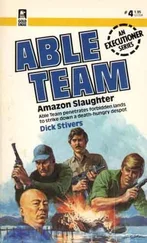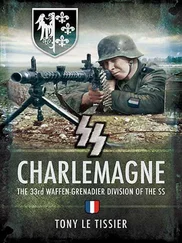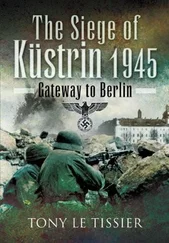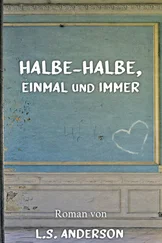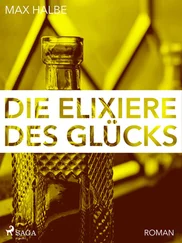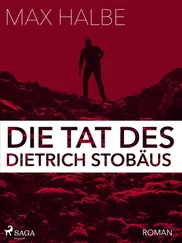It was now about 2000 hours as we drove into Halbe and another anti-tank barrier appeared before us, but this time open. The leading tank had got to within about seventy metres when it fired a shot to clear the way, drove on and stopped about thirty metres from the barrier.
Suddenly the inferno broke out with concentrated anti-tank-gun fire coming from ahead, artillery and mortar fire from above, and rifle fire from the roofs and windows of the houses right and left of the street. The artillery fire, with explosive shrapnel and phosphorous shells, and the mortar bombs, caused especially frightful casualties among the numerous, exposed and crammed together groups of people. The street was immediately filled with dead and wounded. Panic, confusion and deadly fear could be seen in the faces of the living, as cries for help came from the wounded and dying.
Our leading tank received a direct hit and started burning. Our second tank tried to turn, got stuck and was hit by a phosphorous shell, and also caught fire. The phosphorous shells burst with glowing white splashes on the tank, and there was phosphor everywhere on our steel helmets and tent-halves. Stinking smoke erupted as the tank began to burn. The crew bailed out and we also jumped off and ran to the third tank. (I later learnt that the crew managed to put the fire out and get the tank going again.) [23] Lindner in the author’s Death Was Our Companion .
SS-Sergeant-Major Ernst Streng, the commander of the second tank (No. 223) on which Lindner was riding, also gave his account of this action:
We asked for an infantry storm troop. We were standing thirty metres from the anti-tank barrier and could neither turn nor shoot in the narrow space within this tree-lined street. Only the lead tank could fire. A bitter fight had broken out on a narrow frontage from house to house, yard to yard, and ditch to ditch. The street was choked with dead and wounded, and trucks loaded with wounded were wedged between the tanks. The houses began to burn, flaming red flickered over the roofs and from the windows, loud explosions came through the darkness. The Russian defensive fire increased by the minute, especially the dreadful mortar fire. Wild screams of pain came from the wounded calling for help from the mowed-down ranks covering the road surface and pavements.
Phosphor shells exploded with glowing white sparks. We were under enemy tank fire. Now it was getting serious. While the flashes of the enemy guns were difficult to identify, our tank stood out like a dark mass between the blazing fires. There was no way out either to the right or rear. The general’s jeep that had been in front of us before had driven off. The tanks were standing one behind the other, and in this situation we suddenly received a direct hit. A blinding whiteness sprayed out. Within seconds the vehicle was on fire and gleaming with light. Ott shouted: ‘Tank on fire!’ on the intercom. Everyone wrenched open their hatches in fright and we tumbled out of the turret head first and hit the road surface hard. Ott hit the side panel as he fell and hurt his ribs. We jumped down from the tank to the street, but turned around and looked at the dark mass of our tank covered in flames in the middle of a mess of fallen telegraph poles, roof tiles and tree branches. Then we realised that it must have been an incendiary shell. We jumped back aboard, one after another, clattering into the fighting space. The driver groaned as he got behind his steering wheel. He did not think that he could drive any more, and this in the midst of all the confusion around us. But he had to drive, he had to! We cursed and swore at him – he couldn’t leave us now – the tank and crew were depending on him. Our rapid exchange of words was full of swearing.
Kuhnke was not answering any more. What had happened? The commander ordered our tank to reverse immediately into the side street. It was high time. There was no question of getting through, we simply had to get out of this narrow trap if we were to avoid casualties.
In turning, Kuhnke’s tank was set on fire by a tank shell as it tried to escape from the narrow street as quickly as possible. A Tiger that had forced its way forward near us (we couldn’t tell in the dark whether it was from our platoon) was trying to reverse on the pavement, and in doing so caught its tracks on the front of a heavy truck, crushing the cab and engine under the tank’s rear. As a result of this, the flaming gases from the tank’s exhaust set fire to the crushed fuel pipes. The flames suddenly shot up enveloping the truck and tank in a sea of fire. The badly wounded riding on the back and turret of the tank and the crew fell like flaming torches to the street with wild screams of pain. Who would see to them? Everyone had to look after themselves. We drove on immediately, as the burning tank threatened to engulf us. Kuhnke’s tank burst apart with a bright flash of flame. The subsequent explosions sprayed the ammunition over the glowing tank sides into the dark of the surrounding night. The street behind us was already clear.
Blinded by the fire, we got the vehicle moving slowly in reverse in the darkness under the trees. The tracks caught on the crushed dead on the street, who were perhaps being run over for the tenth time. The centre of the street had been under tank fire from behind the anti-tank barrier for several minutes.
Our tank did a 180-degree turn on the spot and rolled away, back along the street. In these uneasy seconds, the crew had an fatalistic feeling, for at any moment an enemy tank shell could hit the rear of the vehicle and, at that range, we knew full well that it would come straight through our relatively weak armour. When at last we could turn into the side street, we were deeply grateful to have survived the hard, costly encounter. Our way led right over a main street on which Kuhnke awaited us. [24] Fey, Panzer im Brennpunkt der Fronten , pp. 198–9.
SS-Second Lieutenant Kuhnke had dismounted in order to consult with his company commander, SS-Captain Neu and his battalion commander SS-Major Kurt Hartrampf, whom he found together in the former’s tank. It was decided to pull back under cover of the leading tanks and bypass Halbe to the north. Kuhnke then returned to his leading tank, which tried to turn left behind a row of trees but got stuck on a tree stump exposing its glowing exhaust to the Soviet gunners in the darkness. The tank was hit in the rear by a shell that set it alight, and the crew had to bail out. Kuhnke was then given a lift by SS-Second Lieutenant Justus of the Reconnaissance Platoon in his armoured personnel carrier. [25] Tieke, Das Ende zwischen Oder und Elbe , p. 317.
Meanwhile Second Lieutenant Dahlinger, commanding 11th Company of Panzergrenadier Regiment Kurmark , was leading his men in house-to-house fighting along the main street under murderous anti-tank, artillery and mortar fire. When they regrouped in a copse to the west of the village, he found that he had only 40 men left of the original 160 of his company on the Seelow Heights. [26] Ibid .
Rudi Lindner, with the escorting infantry, continued:
Houses were on fire everywhere. We wanted to climb on to the third tank, but gave up and tried to establish some order behind it, which, however, did not fully work out. Together with some other soldiers, we tended to the wounded and also persuaded the majority of the people not to seek cover behind the tanks but in and between the houses, so that the tanks could manoeuvre, but we also had to witness the dead and wounded being crushed under the tanks. The street was full of dead and wounded and every minute there were more. Meanwhile fighting had begun in the houses.
With this we got enough air and space to be able to direct our fire at the roofs and windows in the direction of the anti-tank barrier. Slowly the paralysis of the first shock began to wear off especially among the combat-experienced soldiers, and more and more joined in, halfway restoring order out of chaos in helping the wounded and getting them off the street into houses and gardens, and in using their weapons.
Читать дальше

